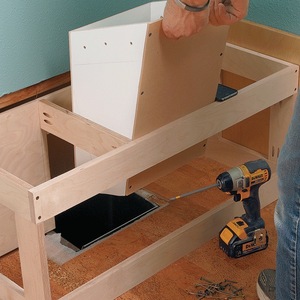So I’ve been building for years. I’ve installed multiple mini splits on my remodels for clients and am considering using mini’s as my cooling source for my new home which I will begin constructing next year. I’ve been reading up on ERV etc and am confident about cooling and fresh air side of things. My brother was an HVAC man, so his guidance is helpful as well, but he switched careers about 8 yrs ago and has limited knowledge of mini’s. I’m building a very modest home, not large square footage and my home will be super insulated and sealed. Walls will be at least R-43 (still figuring out ceiling). Will have a modest number of windows as well.
What I’m struggling with is how to heat as my brother keeps telling me no air heat pump will work in extreme cold temps and they become very inefficient when working in cold. My climate has extreme temps both summer and winter. I know there is a hyper heat function with the mini’s, but I keep getting mixed reviews and signals with using that as a primary heat source. We have a home in the U.K. as well as I split my work between Europe and the US. In the U.K. we use a combi boiler for heating water and wall radiators. I’m considering this for a heat source as we’ve found it to be very efficient and comfortable.
Would really like to use geothermal, but it’s pricing is still way too high for the return. There is a startup in New England that has a unique pay structure and alternate install methods in which they have brought pricing way down to the customer, but I will be building in the Midwest. I’m hoping maybe they’ll expand or someone will take on their business model and start performing work in the Midwest soon, but need to plan otherwise.
I’m not ruling out central air if it’s as efficient or more so. I have a custom floor plan that would work best if I do not have to consider duct work. I can make it work if needed, but no ductwork is very appealing.
Any thoughts? Anyone use mini’s for primary heating in the extreme temp Midwest? Does hyper heat work well for you? I’ve used hyper heat mini’s on remodels, but they’ve been used in conjunction with the homes central air. They’ve worked well, but concerned about them keeping up with cold temps w/out help from central heating. Ultimately I’ll need help from an engineer, but they work off of modeling and what I really want to hear is real world application from people that have used them. Thanks


















Replies
I have a Mitsubishi mini in the apartment over our garage. The place is really tight, but the insulation isn't much above code. Zone 5 in CT, and the mini pumps out heat at -15F. It's kind of magical. Probably costs $50/month in the winter to run it, and we have stupidly high electric rates.
I appreciate your response. Our home will be in zone 5 as well, but it’s not uncommon for my area to have consistent below zero temps with crazy windchill for weeks, so it makes me a little nervous. Are you using a hyper heat mini? Roughly how many sq ft are you heating? I’ll compare your electrical rates to where I’m at to give me an idea of cost, thanks for that info.
You may get longer periods of cold than we do. It's rarely below zero for more than 6 or 8 hours at a time - About 7800 degree days. It's not a hyper heat - That is, no electric coils. The apartment is about 750 sf. I'd have to check with my wife to be 100% sure, but I think we're paying about $.16/kwh.
Thank you. More to ponder!
I salute you for wanting to be energy efficient and wish I could help, but, honestly, I know next to nothing about HVAC systems. That said, I'd like to share a few thoughts.
Make sure your local code department and inspectors accept your plans! I'm in Nashville and the code department here absolutely hates modern, energy efficient building techniques. I'm not kidding. If you want to use advanced framing, they require you to hire a structural engineer to certify it's within code. Want a conditioned crawl space? Same thing. Want to lower a hallway ceiling so you can run duct work without penetrating the attic? Forget about it. Build 2x6 walls? You're a weirdo.
That said, never underestimate the basics. Ten years ago, my wife and I built a two story, 1,700 square foot house with two 1 1/2 ton heat pumps, 2x4 walls and builder-grade double-pane windows. Everything is powered by electricity. I paid extra close attention to caulking and sealing. Our electric bill is $95- $105 a month.
Yes, not going to underestimate the basics. I just don’t want to see myself regretting installing a more efficient system that may only be around $3,000 more. I know an engineer will need to provide me with best set up, but I’ve found that they are often off with their assessment as they make a few assumptions with their calculations or miss things. I’ve found this especially true of my commercial work. They’re off all the time. Example, I built a bar and grill where the engineer spec’d a make up air for the kitchen hood that was not using conditioned air. I asked the engineer why would you bring humid hot air into the building, told it was fine. I ended up replacing the unit with a conditioned air type as opening night of the bar and grill everyone was dripping in sweat. Do you think the engineer paid for the repair? Nope. I’m hoping to find someone that has a similar set up with a climate similar to mine, so I can have some first hand knowledge and not make the wrong decision.
I will have to run everything by my building department as my city has quite a bit of regulation. It’s a pain, but appreciated in the long run as it helps create better built buildings in my city.
Thanks
You need to calculate your average and peak heat losses and solar gains in order to select a mini split that is optimal for your home. You can always use an electric space heater, or electric resistance (or better radiant) heating unit as an emergency backup or booster for the infrequent coldest periods. They are cheap and won't be used often. But significantly oversizing any system (like most HVAC installers typically do, rather than calculating heat losses and gains) tends to create cycling any heating or cooling system with temps overshooting and undershooting your thermostat temperature setting. Too powerful (and expensive) for the job! It is more comfortable, efficient and costs less if you size a system to be just sufficient to handle your area's winter and summer design temperatures. For more specific advice, ask this same question on greenbuildingadvisor.com or other sites where mini split sizing questions are often discussed in detail. But the first thing they will tell you is to do a Manual J or calculate your (approximate) heat losses and gains.
Your HVAC brother should be able to do a Manual J for you (though many HVAC people don't bother and just guesstimate and oversize everything). To do this yourself manually or using a spreadsheet on your computer...you would divide your building's exterior shell (or better, each separate room or area of your home) into separate assemblies such as walls, windows, ceilings, floors; whatever faces the outdoors. For each individual building assembly, multiply the SQFT area of the assembly times the elapsed time (hour or day), times the temperature difference between indoors and outdoors (look up or google your winter and summer average and more extreme design temperatures), divided by the R-value of the assembly (sum up the layers of the assembly, or google it for typical R-values such as R-13 for 2x4 insulated stud walls). You mentioned you have calculated your R-value for your walls, and you say you are still deciding about your ceiling/roof R-value. Windows are R-2 (double pane) but nearer R-3 with some types of window coverings, or R-4 for double panes with argon etc. Sum up the heat losses (or summertime heat gains) for the components, then sum up the rooms to estimate the total heating and cooling needs. You could find someone to do your Manual J calculations, do it manually yourself, or use online tools to do it yourself. The more detailed, the better, but even a rough estimate of your dimensions and R-values is much better than nothing!
Once you know your heat losses and gains for coldest winter and hottest summer conditions, you can select a mini split(s), with or without some extra backup protection, or any other heating or cooling system alternatives. That selection will be a better fit for your home, your comfort, and your bank account!
Even better, look at your calculated heat losses and gains, and use more insulation, adjust window sizing and placement, add supplementary shading, or increase wintertime solar heat gains through windows, to help reduce your system's size, initial cost or ongoing utility costs! Consider the additional cost of improving your building shell vs. the ongoing utility and maintenance costs (which tend to increase over time).
Mini splits now are much better at handling sub-zero temps, but a few things to consider: They work great with open floor plans, but may require ducted systems for bedrooms (since doors tend to be closed overnight). One mini split head per floor is needed for both heating and cooling. Heat rises to the upper floor in winter, and cool air floats downstairs in summer, but one simple mini split head doesn't handle both floors for both seasons very well. Use a certified installer to select and design your system, unless you have a simple one-story open floor plan. We have a mini split with one single head in the living room, that works fine for a 3 bedroom 2 bath ranch that's not well insulated with single pane & storm windows in New England, but a mile from the ocean, not an extreme climate. My girlfriend is not very tolerant of cold or warm interior temps! She's more comfortable with this simple mini split than the old ducted central air and old oil furnace ducted forced air central heating systems. But it took a couple weeks to figure out the ideal temp setting. We use the built-in mnisplit thermostat but should invest in a separate remote thermostat that can be placed in a more central location.
Best of luck and I admire your efforts to design your own home.
Thank you for your input. I’ll bother my brother a little more to determine heat loss etc calculations. My HVAC sub and their in house engineer will be of help too, but have a feeling they will try to push me in the direction of a more conventional install to make their life easier. I’ll give greenbuildingadvisor a shot as well. I haven’t been on their site for awhile, forgot about them.